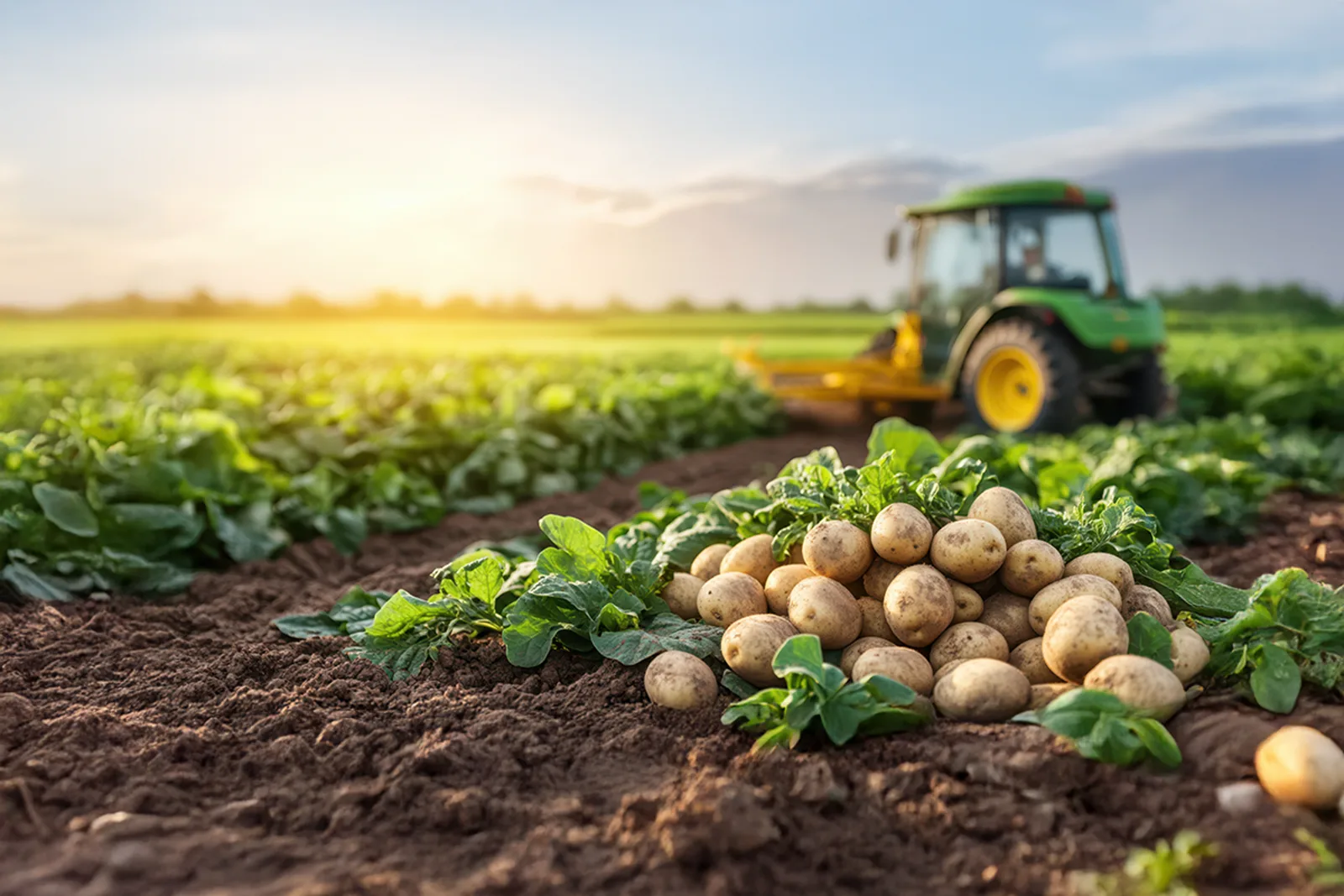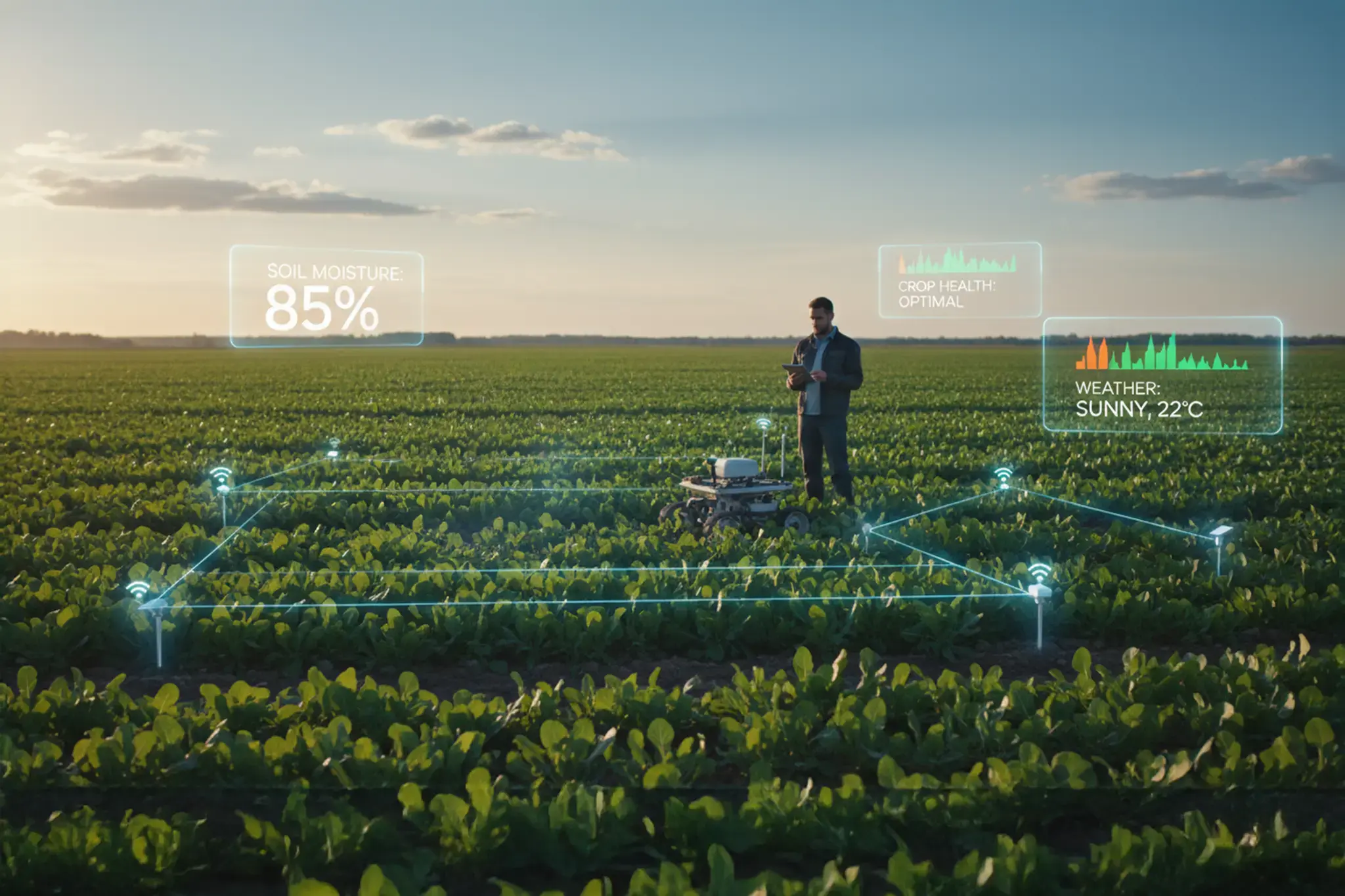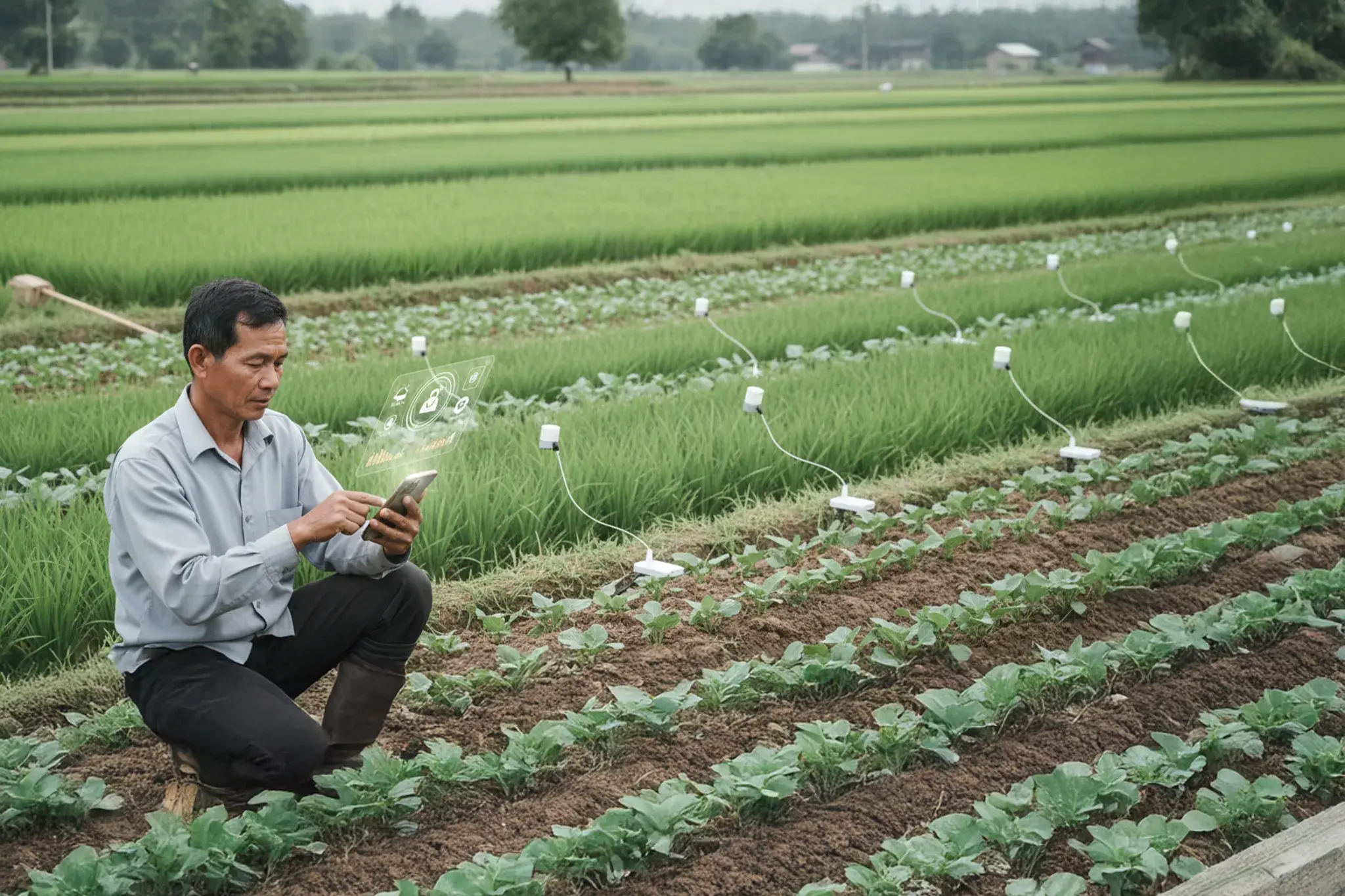Synopsis:
This blog explores smart potato cultivation. It details every critical stage, showing you how digital agriculture technologies, like Cropin’s platform, empower farmers with data-driven insights. It addresses the challenges of maximizing farm productivity, quality of produce, and per-acre yield for a truly sustainable future.
There is a huge pressure on agriculture today. Increased demand from a growing global population, strained resources, and climate change threaten traditional farming. Rising temperatures, unpredictable weather, soil degradation, and economic instability derail our food supply. Potatoes, the world’s third-largest cultivated crop, are a good alternative for sustainable agriculture. While staples like wheat, rice, and maize require extensive irrigation and heavy fertilizers, potatoes adapt remarkably to diverse climates, offering good yields with reduced input demands.
With a global market valued at over $100 billion, potatoes are a source of livelihood for millions of farmers. Potato farming is more than a source of food! It is a powerful tool for economic development, climate resilience, and nutritional improvement. The global potato processing industry, valued at over $40 billion in 2024, is pegged to touch $60-70 billion by 2030. Every day, more than 950 tonnes of potatoes are processed into potato chips – one of the most beloved culinary inventions! And for the perfect crunch, the right cultivation is the key.
Advantages of potato for sustainable agriculture

Potato cultivation: precision from seed to harvest
For a quality harvest with a high yield, one must start with a seed best suited to a region’s unique agro-climatic conditions. The needs of potato plants vary across their lifecycle. Maximum yield can only be obtained with precise timing and quantity of application of chemicals and optimum irrigation. Here’s how targeted insights can optimize each stage:
- Disease & pest mitigation: Advanced alerts into disease probability to implement mitigation efforts and safeguard yield
- Yield enhancement: Applying nutrients at the right time during the crucial stages to improve per-acre yield
- Quality & resource management: The quantity of water directly impacts tuber solid content, making it critical to calibrate irrigation
- Optimized harvest planning: Aligning harvest with plant growth progression ensures good harvest planning with minimal losses
Now, let’s explore how deploying the Cropin platform can optimize potato cultivation.
Interesting facts about potato

Pre-sowing & sowing – setting the foundation
Maximum efficiency is defined by good yield, the planning for which must start long before planting seeds. Crop rotation plays a significant role in naturally reducing pest and disease pressure, as well as the quantity of fertilizers, and in sustainably improving the soil, all of which contribute to enhanced potato yields.
Smart preceding crops:
- Avoid planting potatoes after other Solanaceae (nightshade) family crops, as this can lead to insect build-up.
- Winter wheat is an excellent choice for improving soil structure
- Spring legumes (e.g., soybeans) enrich the soil, reducing the need for nitrogen.
- Avoid barley due to potential Rhizoctonia disease risks.
Potatoes grow well in loose, well-aerated soils that let roots penetrate easily and tubers grow freely. Light, sandy loam soils are best suited, as they allow excellent drainage while trapping sufficient moisture. Deep tillage prepares the soil perfectly, with depth adjusted for soil type. Soil preparation is the first critical activity of the season. Applying pre-emergence herbicide at this stage is also vital for weed management.
Leveraging Cropin for pre-sowing efficiency:
The Cropin platform seamlessly captures the following data points
- Farm and farmer details
- Crop rotation history
- Irrigation
- Tillage and green manuring
- Soil test & more
The secure data is easily retrievable, simplifying decision-making for field teams. Cropin’s digitization enables
- Configuration of optimal “Package of Practices” (PoP).
- Timely alerts on PoP & monitoring its adherence.
Proper tuber development relies on good aeration, consistent moisture, and the right soil temperature. Cropin’s AI/ML models use historical weather insights and nowcast data to compute optimal sowing dates, considering temperature and rainfall patterns. Cropin’s weather forecasts feature temperature, precipitation, humidity, frost, and rain. This information enables farmers to maintain the best soil temperature and moisture levels during crucial stages of growth. Generic alerts such as proper earthing up (hilling) once plants reach 15-22 centimeters in height are also raised to ensure optimal growth.
Crop rotation summary
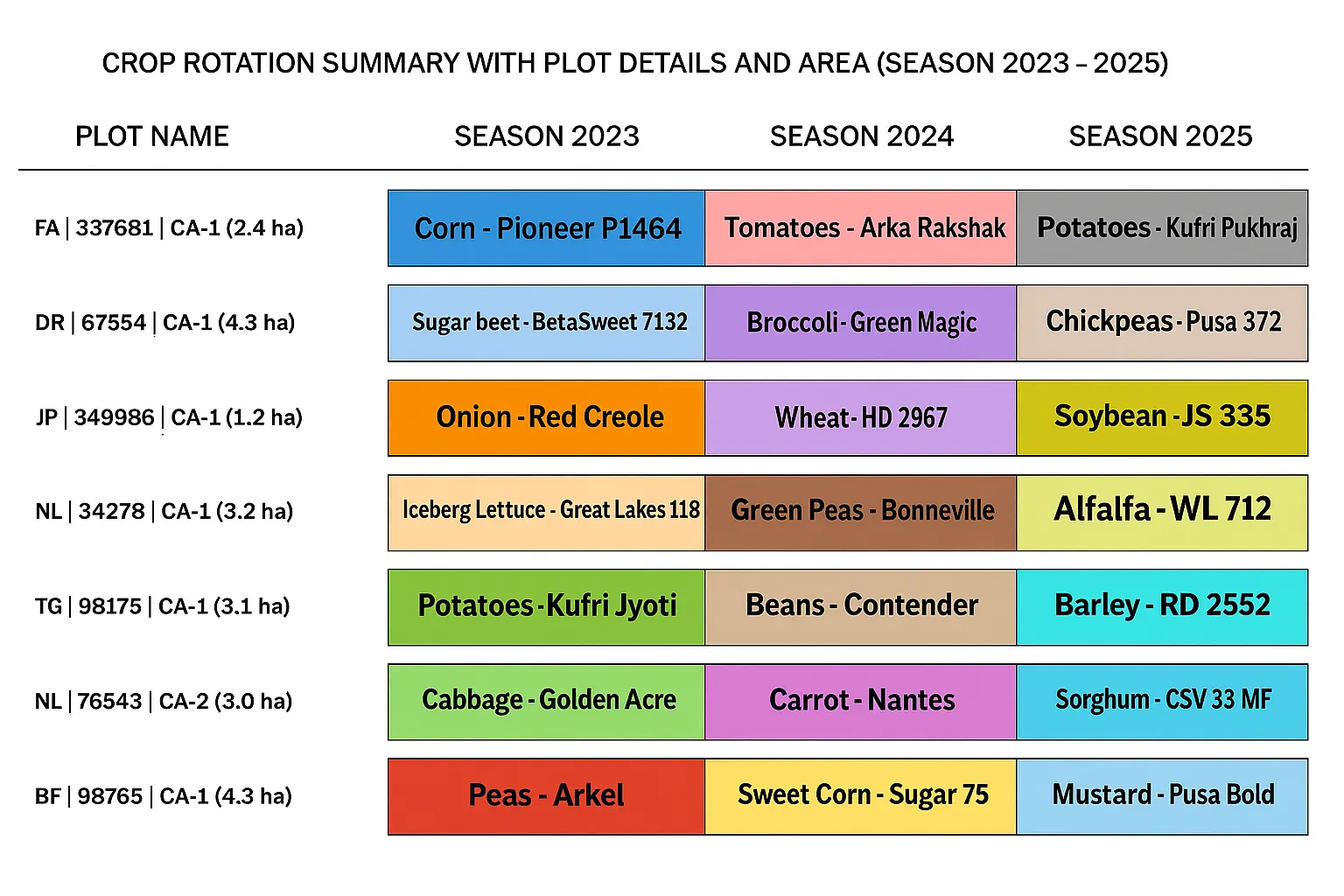
Stages in potato cultivation
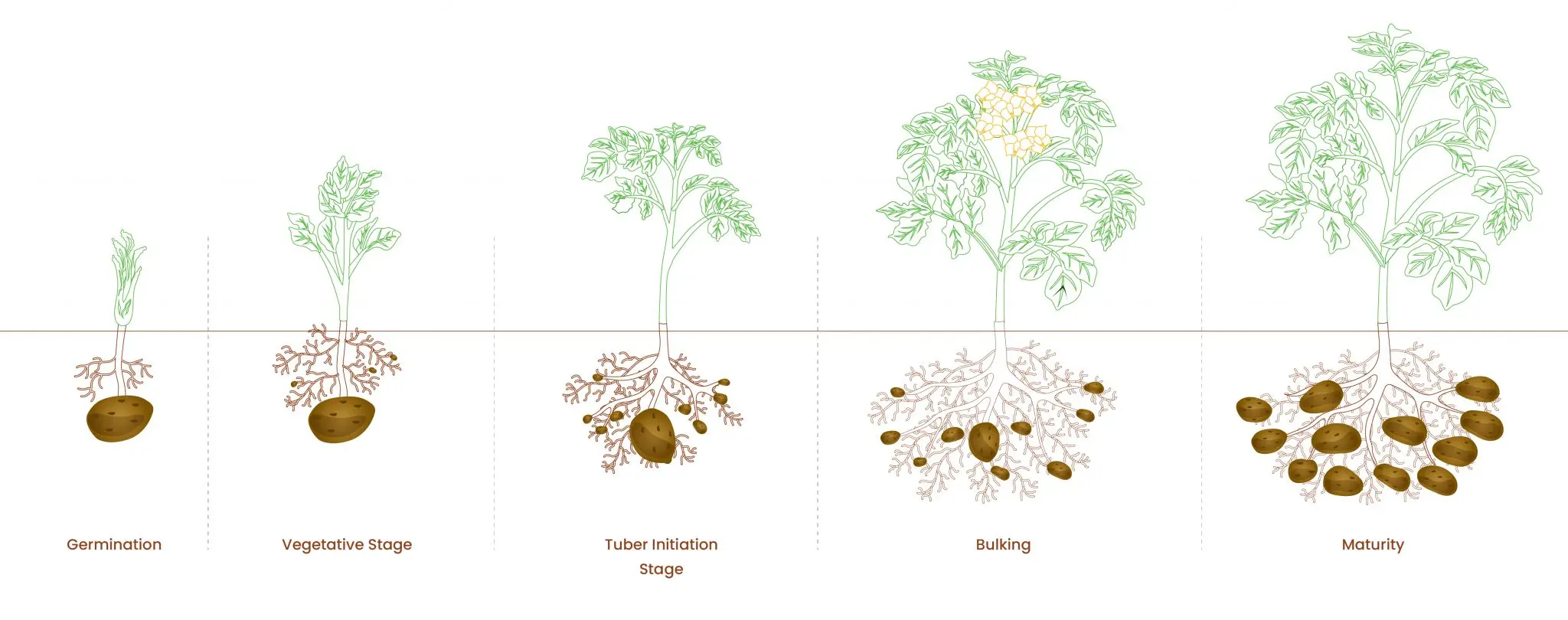
Germination – the emergence
Potato germination happens underground. Nutrients from the seed potato support sprout development. Healthy leaf growth is an early sign of a strong plant. In 2-4 weeks, these leaves emerge from the soil. Weed control using weedicides is vital during the pre-emergence period. Cropin’s platform can capture
- Germination rates
- Fertilization schedules
- Chemical treatments
Irrigation planning is crucial for germination, as potatoes are vulnerable to overwatering. Soil must remain consistently moist but not waterlogged. Although potatoes are tolerant of short dry spells, insufficient or unreliable rainfall can adversely impact yield and quality. Based on Cropin’s weather forecasts, irrigation recommendations and schedules are computed, and alerts are raised. As plants develop, weeds find ample room to grow, making weed scouting a crucial task at this stage.
Cropin’s Disease Early Warning System (DEWS), a weather-based disease prediction AI model, indicates the probability of disease occurrence based on historical and forecasted weather and past threat occurrences. The performance and predictions improve continuously from past data and actual ground conditions. It is an effective tool to keep pests and diseases in check.
Advantages of Cropin DEWS

DEWS also provides alerts for pests like white grub during germination.
Vegetative growth – building the plant
In the vegetative stage, potato plants rapidly develop side shoots and main stems, gaining structure and height. Leaves grow quickly, often doubling the canopy weekly. Horizontal stems, called stolons, which eventually swell to become tubers, also begin to form underground.
This rapid growth demands sufficient water and nutrients. Constant weed control remains essential. Soil moisture of 70–80% field capacity is required for optimal development. Levels below 65% cause water stress, hindering foliage and root growth, which in turn results in weeds. On the other hand, over-irrigation will lead to waterlogged roots and accelerate nitrogen loss. Assessing crop health is vital now.
Cropin: outsmarting traditional farming with satellite intelligence
Cropin helps you remotely monitor farms using satellite imagery. This identifies canopy variations and potential problems from afar, allowing for quick risk mitigation. Cropin intelligence combines crop science, remote sensing, big data, and is based on a crop’s phenological properties, crop stage, progression, region, weather, etc. Cropin defines crop health using
- Canopy Greenness (derived from Normalized Difference Vegetation Index): Detects changes in growth progression, guiding fertilization.
- Canopy Nutrient Uptake (derived from Normalized Difference Red Edge Index): Aids nitrogen management.
- Canopy Water Stress (derived from Land Surface Water Index): Helps plan irrigation.
These are categorized into buckets and help detect changes in growth progression to plan input optimization. Irrigation schedules can be optimized across all growth stages by combining this data with precipitation forecasts – watering more during dry spells and conserving water when rain is expected.
DEWS, the weather-based disease prediction model, indicates the probability of diseases like Bacterial Wilt, which can infect plants at various stages. The system uses crop science and weather data (temperature, humidity, precipitation). The probability threshold to raise alerts can be configured. DEWS alerts help mitigate diseases like Bacterial Wilt, Root-knot nematode, Golden cyst nematode, and insects like Leaf Eating Caterpillars, Leaf miners at this stage, safeguarding yield.
Tuber initiation stage: where potatoes begin to form
Tuber formation typically begins 2–4 weeks after the crop emerges. This timing varies by cultivar, day length, and weather. Potato water requirements significantly increase now, needing 80–90% soil moisture field capacity. Daily irrigation is often essential, especially in hot weather.
Irrigation planning based on soil type, weather, and potato variety is very crucial. Insufficient water leads to tuber deformities, stunted growth, and tubers with low solids. Excess water promotes increased foliage, fungal diseases like early and late blight, and delays tuber formation. Nutrient management is another crucial aspect, as nitrogen deficiency inhibits growth and excess prolongs it.
Cropin’s integrated management for optimal tuber growth
Cropin’s platform provides real-time insights into field activities, DEWS alerts, weather updates, crop health, and growth via dashboards and reports. This enables data-driven decisions for timely interventions, optimizing resource usage for ideal plant health, nutrient, and water distribution. Farmers receive activity alerts, and the platform tracks PoP adherence to ensure the right practices are applied at the right time for improved yield per acre.
Heavy pest pressure is common during the tuber initiation stage. Cropin’s DEWS continuously monitors various potato diseases and pests by overlaying historical and current meteorological data, crop growth stage, and past threat incidences. This provides real-time risk assessments. Cropin DEWS alerts cover threats like Early Blight, Potato Virus Y (PVY), Late Blight, Whitefly, Thrips, Black cutworm, Potato scab, snug, and snails. To control excessive vegetation, alerts on growth regulator application are raised around 30 and 45 days after sowing to enhance yield.
Tuber bulking – The critical growth phase
In potatoes, nearly 70% of the roots are found in the top 12 inches of soil, which means the concentration of water and nutrients here will determine how many initiated tubers will mature. Maintaining soil moisture above 65% field capacity promotes a high tuber set, while varying water and nutrient conditions can cause malformed tubers. Cropin’s water stress index helps with constant soil moisture monitoring for effective irrigation planning. Balanced fertilization is essential to promote tuber growth and quality. Nitrogen application needs careful management to avoid excessive leaf growth at the expense of tuber development. Canopy Greenness and Canopy Nutrient Uptake indices on Cropin’s platform help manage this.
Fertilizer top dressing is crucial for improving yield quality and quantity, and alerts are raised for the same. Weed scouting continues for informed herbicide application decisions. This stage is among the most critical for yield formation. As nutrients shift to developing tubers, foliage vigor naturally declines. This increases susceptibility to diseases.
Continuous real-time monitoring on Cropin’s platform, along with DEWS alerts, prevents disease progression, optimizing quality and yield. During the tuber bulking stage, potato plants are more vulnerable to threats. Farms must be monitored for common diseases like Late Blight, Black Scurf, PVY, and Potato Leaf Roll Virus. Pests such as the Potato Tuber Moth, Aphids, Thrips, and Whiteflies are also more likely. Factors like humidity, temperature, and the quality of seed potatoes play a big role in how these threats develop. Cropin’s DEWS predicts disease occurrence at least 15 days ahead, allowing ample time for mitigation efforts and pathogen threat management. The Field Activity log also aids in planning fungicide applications and protecting maturing potatoes. These features safeguard yields and can reduce unnecessary treatments. Cropin’s yield estimation and harvest re-estimation models improve the accuracy of yield estimations with scientific Smart Sampling.
Growing Degree Days (GDD) is a measure of accumulated heat units required for crop development. Cropin’s AI models use this to estimate key growth stages, including the harvest window. When aligned with harvest planning, it can optimize farm workforce management, tuber quality, storage conditions, and post-harvest logistics.
Post-harvesting
The potato plant typically reaches maturity around 100-120 days after sowing. The first sign is the yellowing and falling of the plant’s leafy stems (haulms). At this point, the haulms should be removed at ground level. The potato crop is then ready for harvest approximately 15 days after haulm cutting. Irrigation must be stopped 10-12 days before harvesting. This is crucial to prevent Potato Tuber Moth infestation and reduce soil moisture, which can hinder the harvesting process.
Expanding potato cultivation with intelligence
Escalating demand and climate change disruptions often drive the need to expand potato cultivation into new regions. Before any expansion, it’s vital to understand a region’s potato suitability and potential risks.
Cropin’s AI models provide critical insights
- Assess suitability and yield potential.
- Analyze potential risks like disease pressure, drought forecasts, precipitation, heatwave intensity, and growing degree days.
This allows for informed, data-driven decisions when diversifying to new geographies. Utilizing Cropin Sage’s AI-powered analytics helps explore expansion areas confidently.
From precise seed selection and real-time monitoring to optimized harvesting and strategic expansion, leveraging Cropin’s contextualized advanced agricultural intelligence is transforming potato cultivation. Cropin empowers farmers and businesses to make informed decisions at every stage, ensuring resilient yields, enhanced quality, and sustainable growth for this vital global crop.

